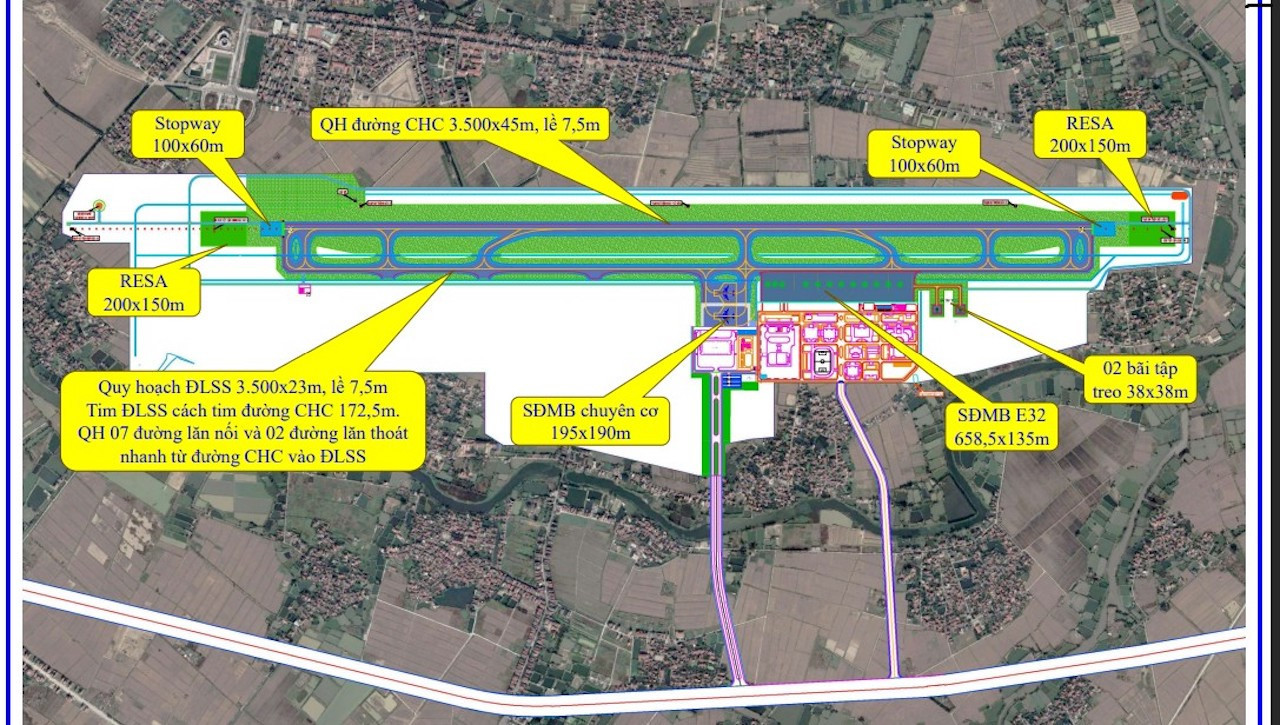
According to recent adjustments by the Ministry of Construction, Gia Binh Airport will have the same passenger capacity as Noi Bai Airport but will occupy a significantly larger area.
The Ministry of Construction has once again revised the Master Plan for the Development of the National Airport System for the 2021–2030 period with a vision to 2050. This marks the third such revision by the ministry this year.
In the previous two adjustments, the Ministry increased Gia Binh Airport's capacity and officially incorporated it into the national airport network. In this third revision, the ministry continues to raise its target, elevating Gia Binh Airport's capacity to match that of Noi Bai.
Specifically, by 2030, Gia Binh Airport will remain an international airport classified as 4E under ICAO standards, but its capacity will rise from 5 million to 30 million passengers per year. By 2050, the airport is expected to handle up to 50 million passengers annually, a significant jump from the previous projection of 15 million.
The airport’s total land area has also been expanded from 408 hectares to nearly 2,000 hectares to accommodate the increased capacity.
With this expanded footprint, Gia Binh Airport will surpass Noi Bai and Tan Son Nhat airports, which each span about 1,500 hectares, becoming the second-largest airport in the country after Long Thanh Airport, which covers 5,000 hectares.
Investment needed for Gia Binh Airport from now until 2030 is estimated at VND 120.839 trillion (approximately USD 4.75 billion). For the long-term vision to 2050, an additional VND 61.455 trillion (about USD 2.42 billion) will be required.
Alongside increasing Gia Binh Airport’s capacity, the Ministry of Construction is also adjusting the capacity of Noi Bai Airport downward.
By 2030, Noi Bai Airport’s capacity will be reduced from 55 million to about 30 million passengers per year. Looking ahead to 2050, its projected capacity is 50 million, rather than the previously planned 85 million passengers per year.
Noi Bai Airport will maintain a total area of approximately 1,500 hectares.
Thus, the airport is expected to maintain its current structure through 2030, with no immediate need for upgrades as it is already operating within planned capacity. For 2050, it will require close to VND 10 trillion (around USD 393 million) to upgrade infrastructure and increase its capacity by another 20 million passengers annually.
According to the Ministry, Gia Binh Airport’s airspace is located near the approach control zone of Noi Bai Airport. Therefore, air traffic between the two airports will need to be redistributed appropriately.
On December 10, 2024, construction of Gia Binh Airport commenced in Xuan Lai Commune and Gia Binh Town, Gia Binh District, Bac Ninh Province, approximately 40 kilometers from Noi Bai Airport. Initially spanning about 125 hectares, the airport was designated for training flights and national defense missions under the Ministry of Public Security's Air Force.
However, the government has since approved its upgrade into one of the country’s largest commercial airports, intended to share passenger and cargo traffic with Noi Bai Airport.
PV